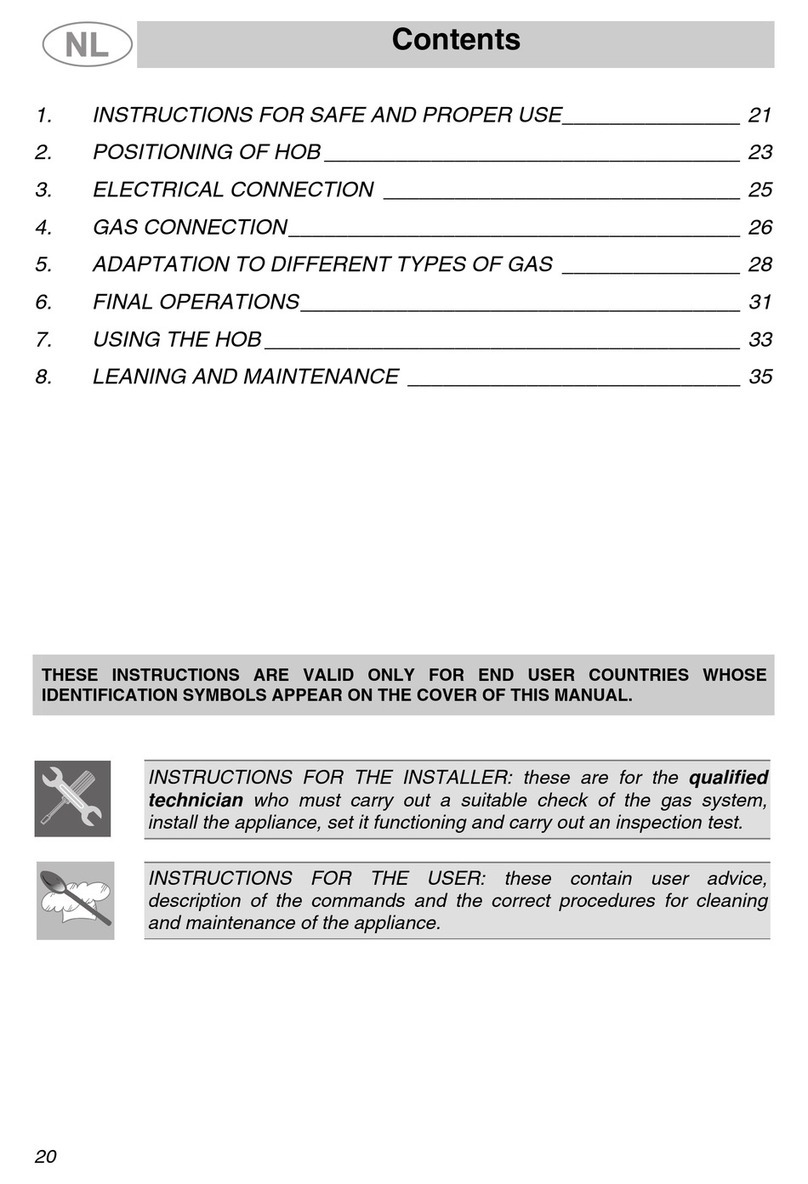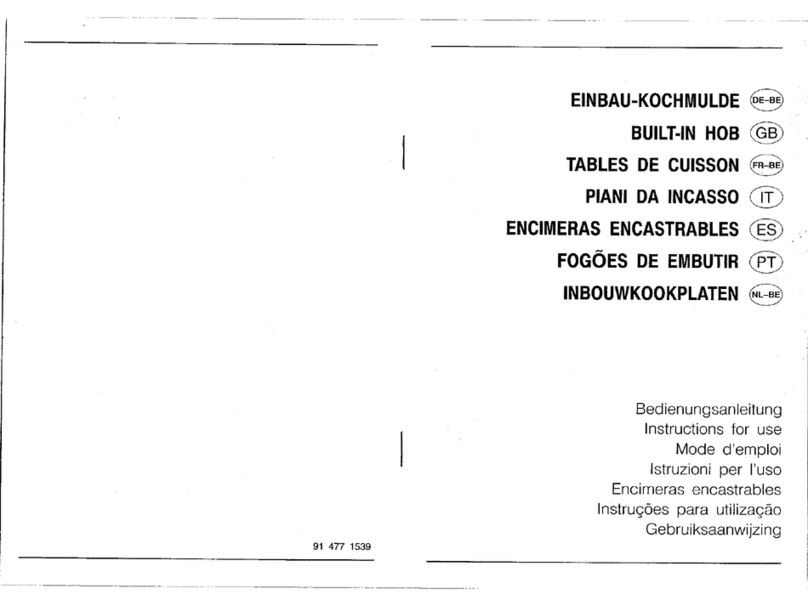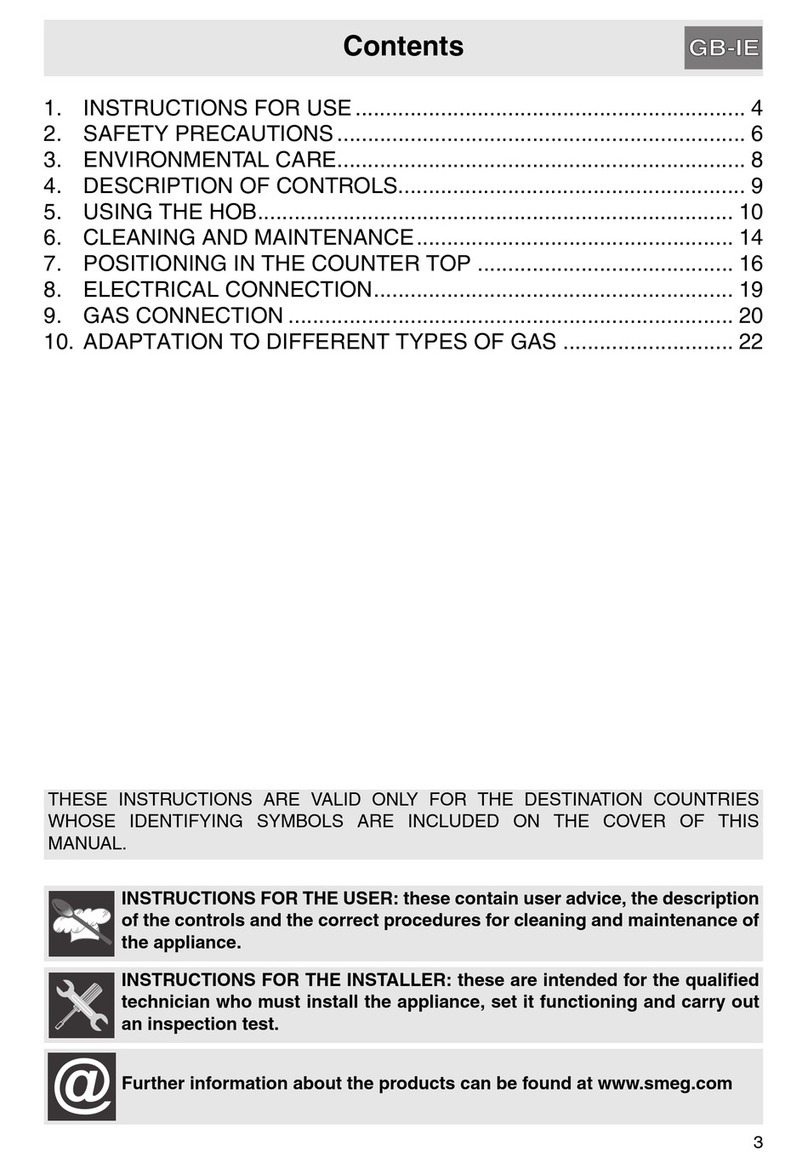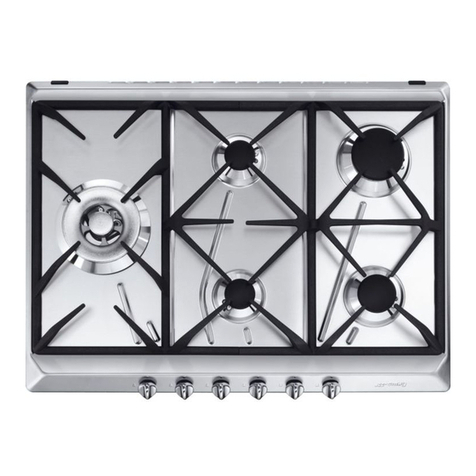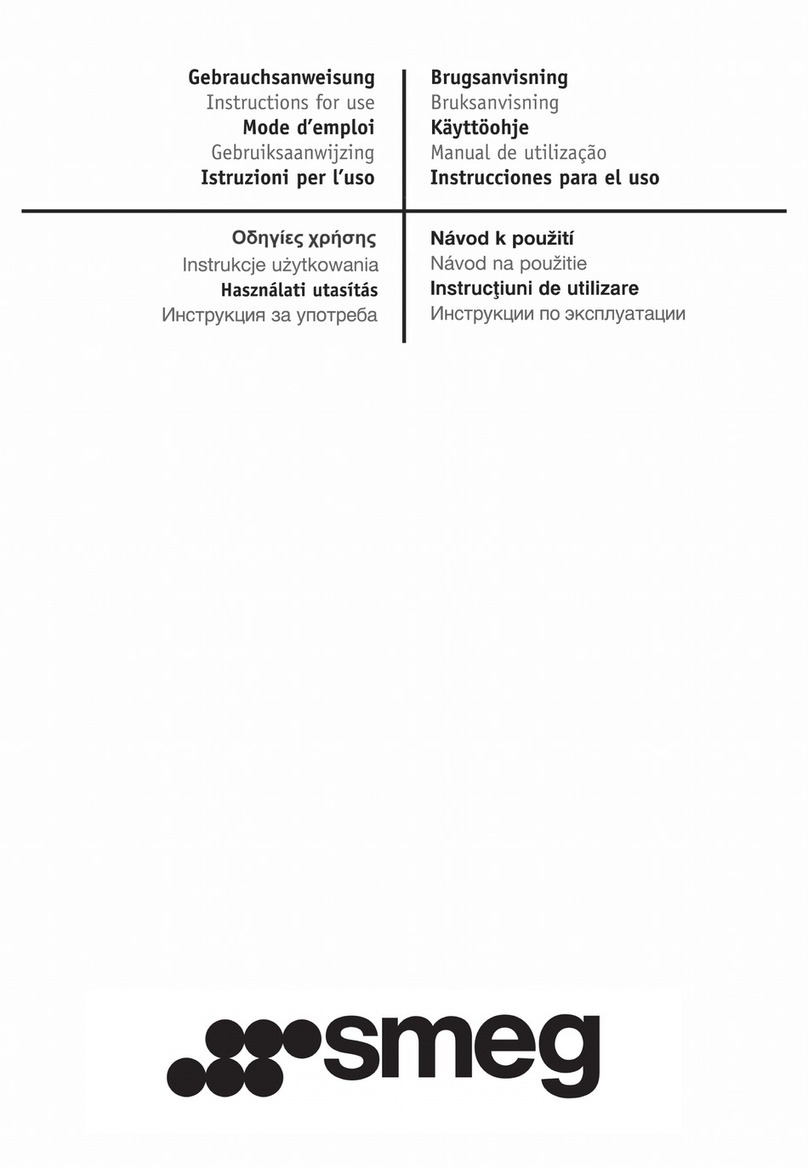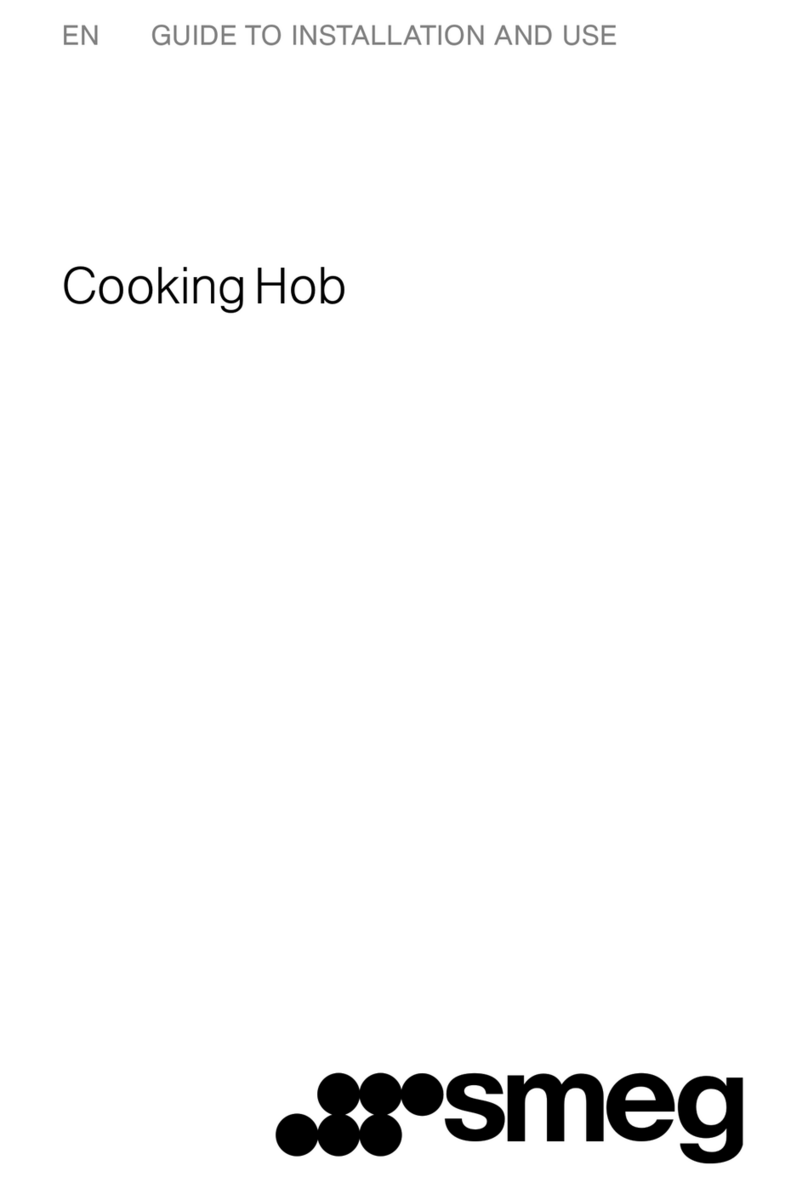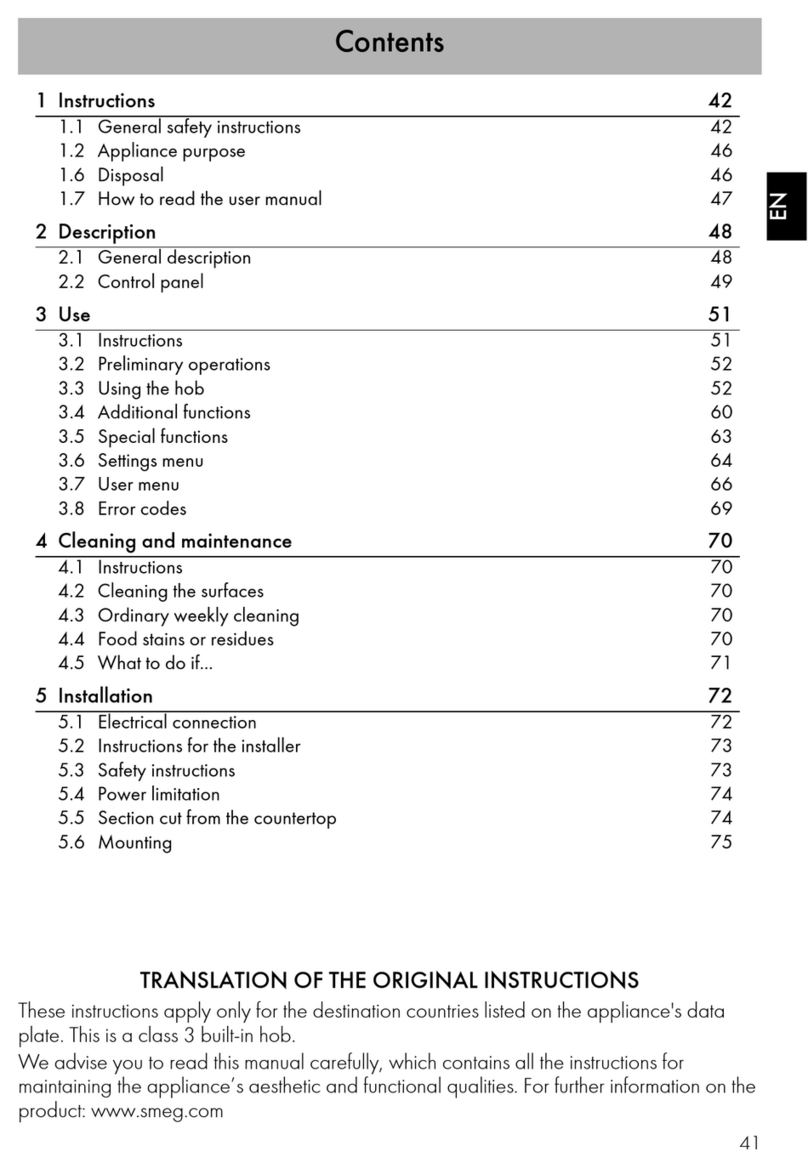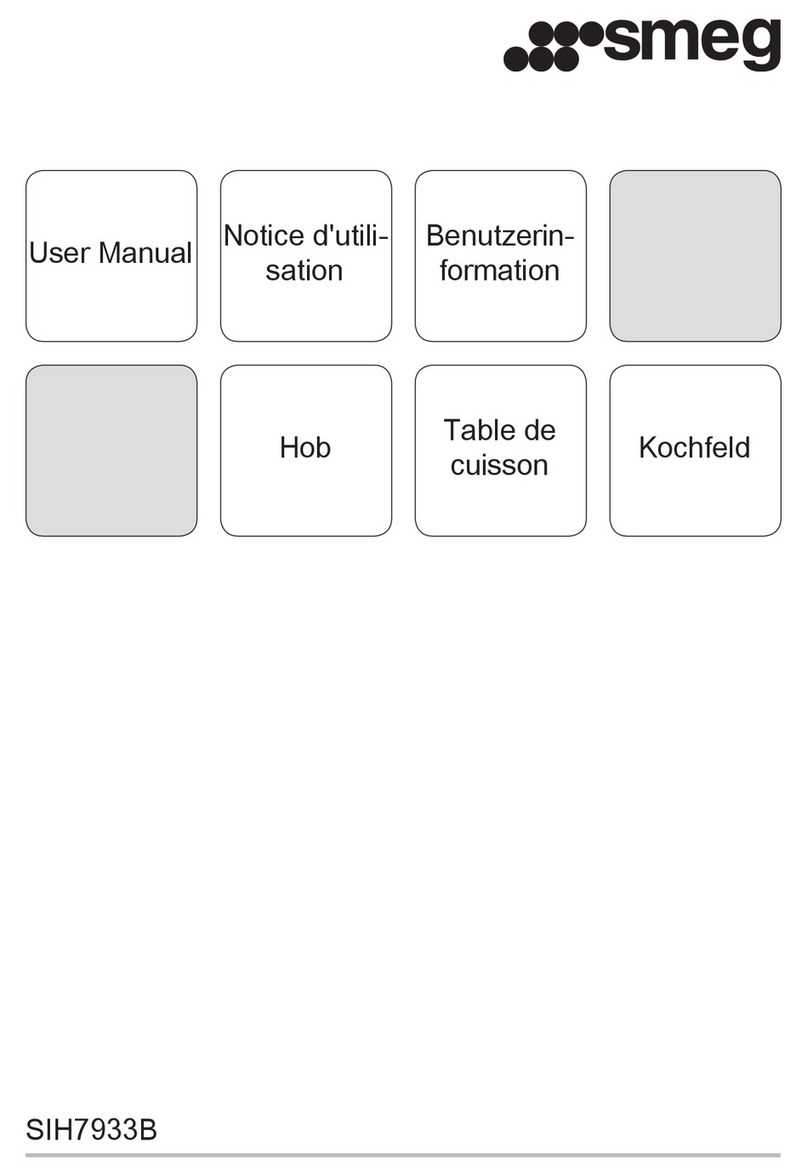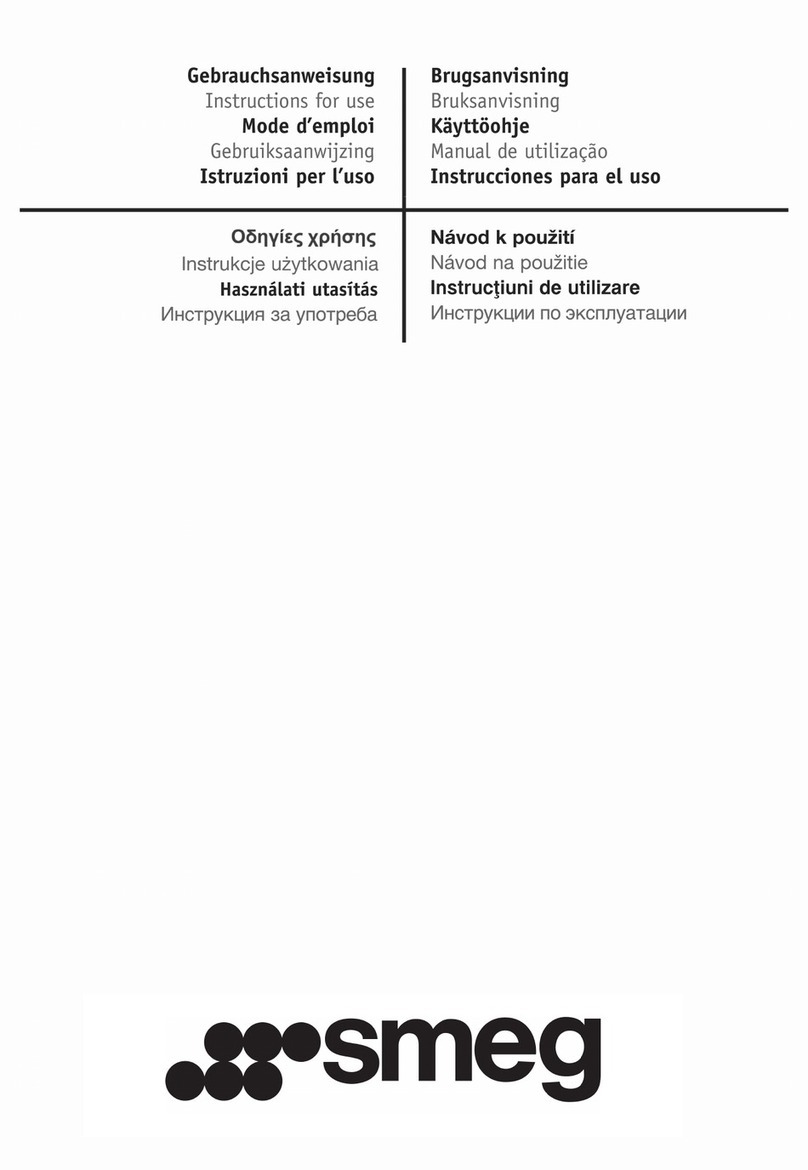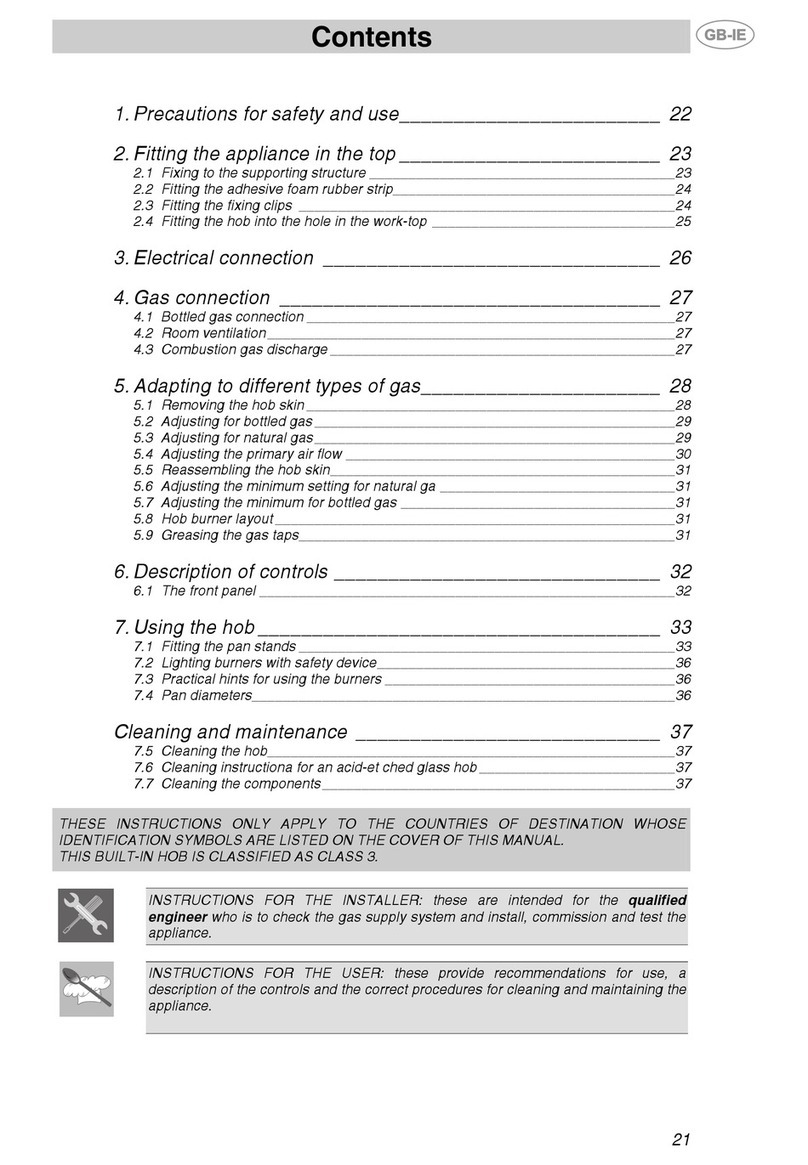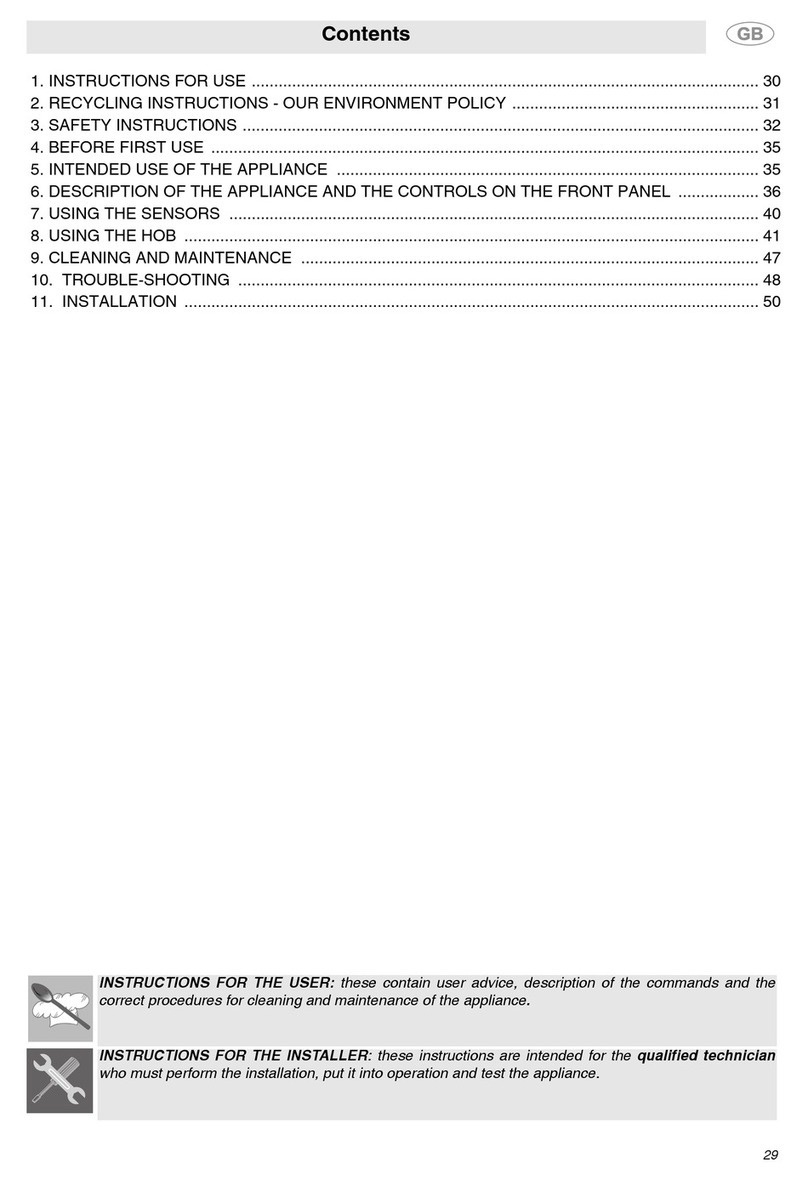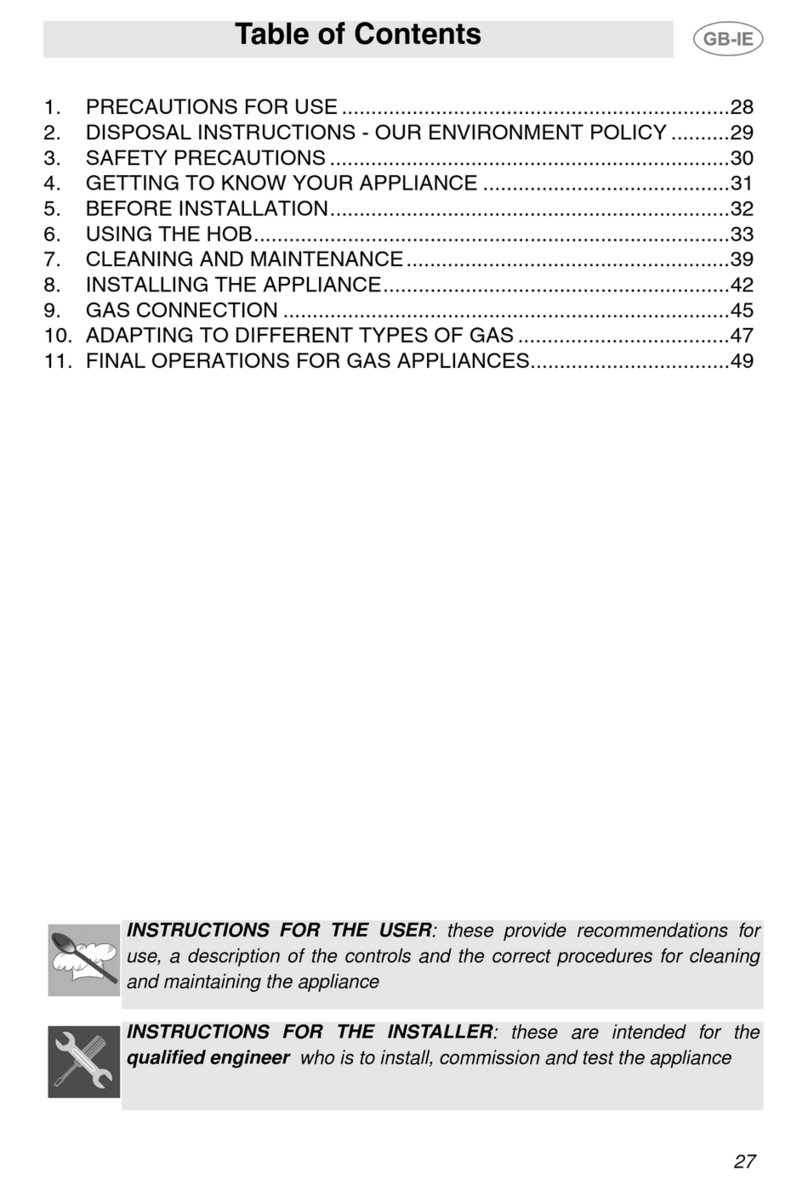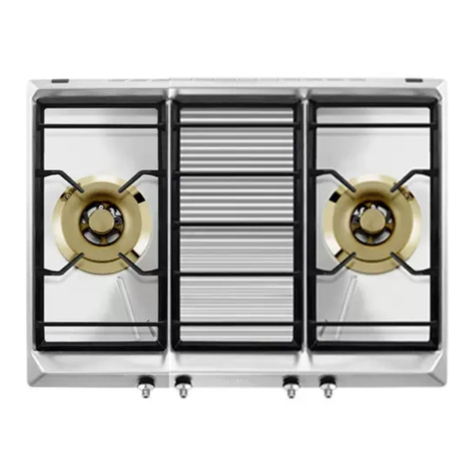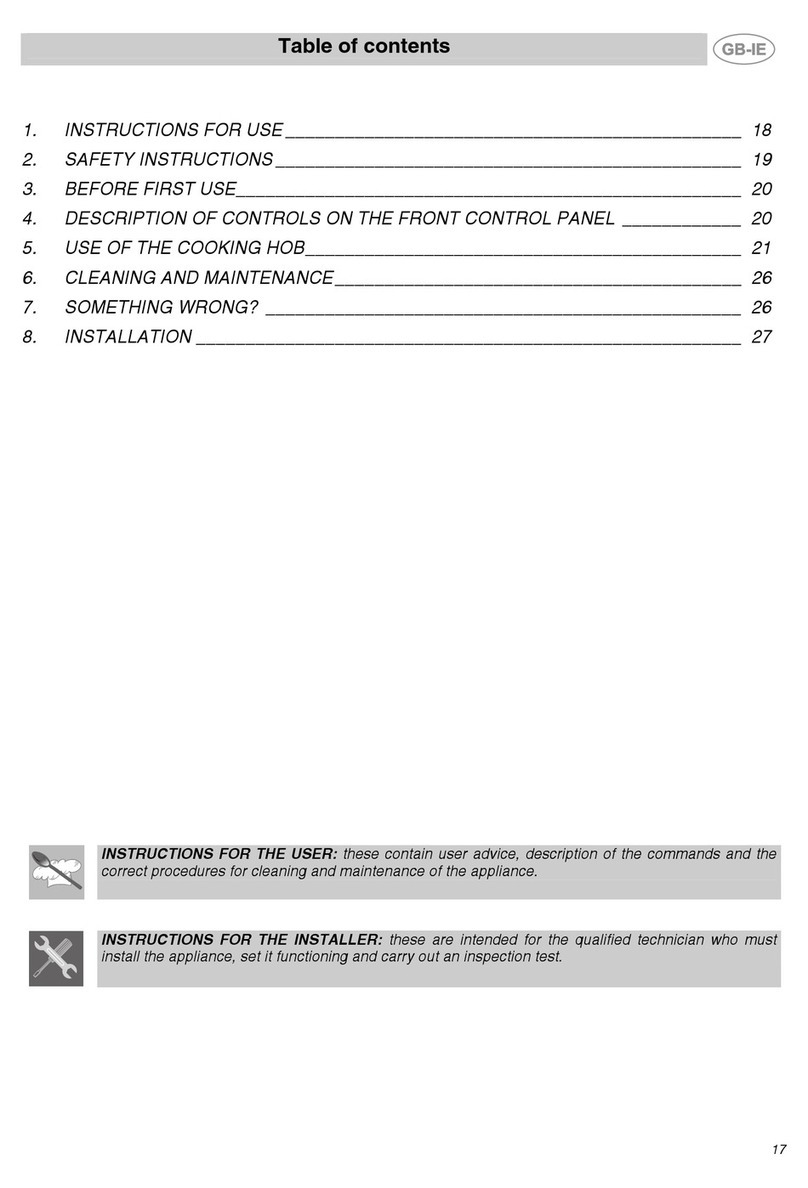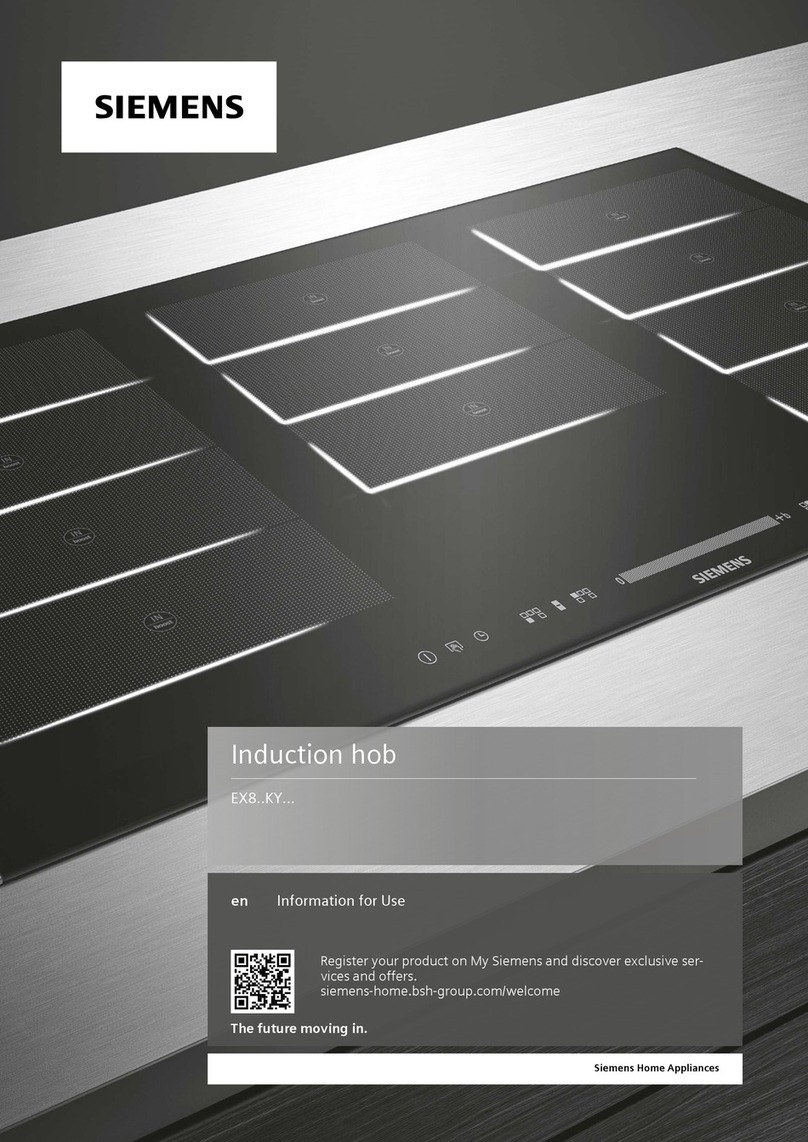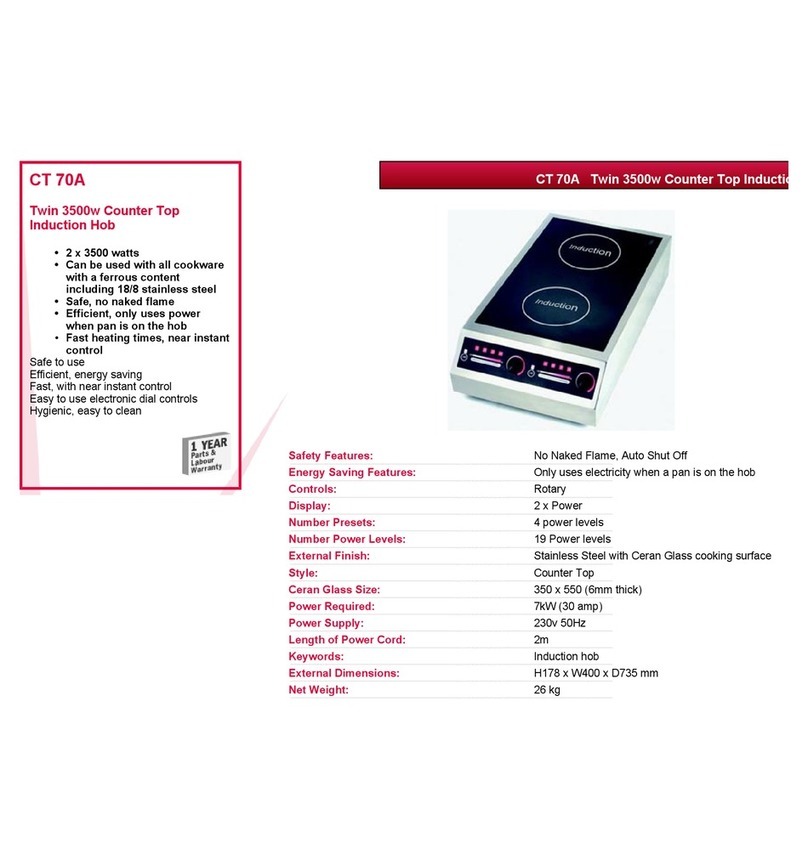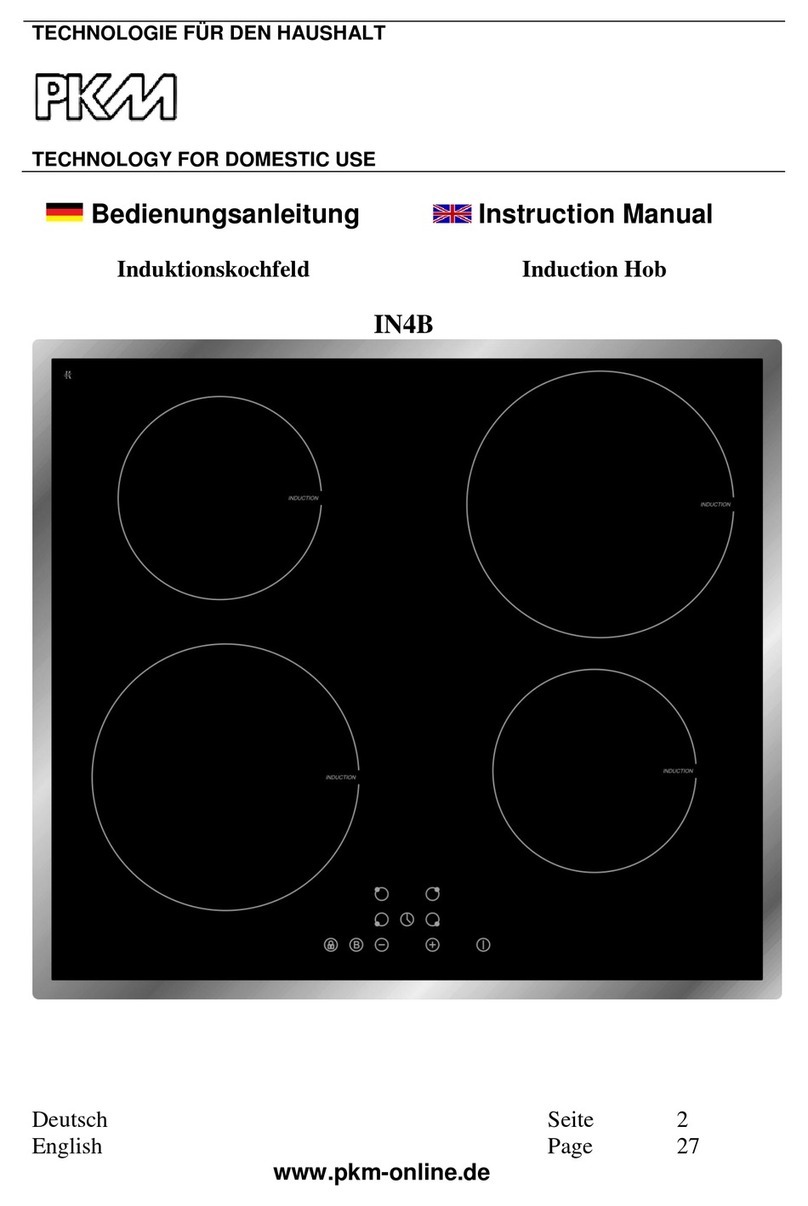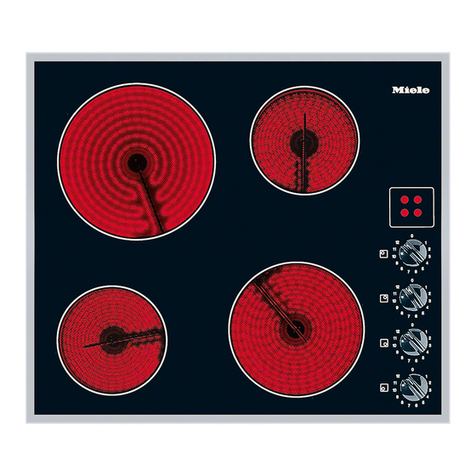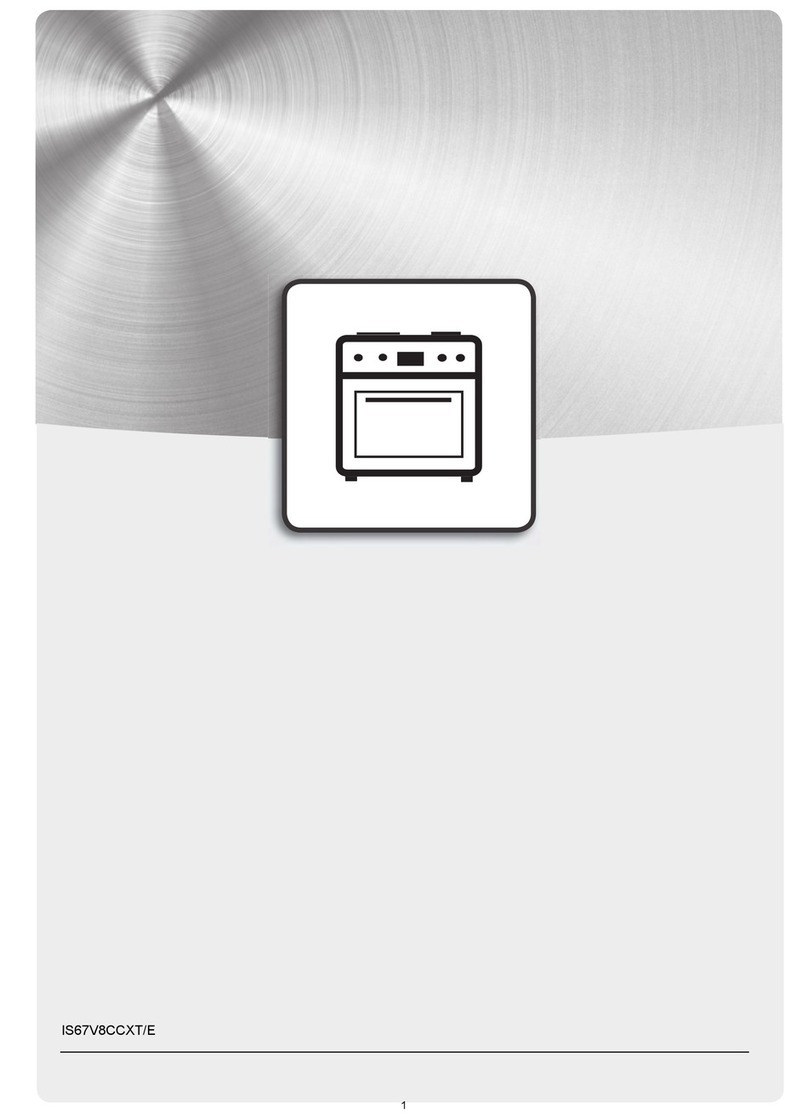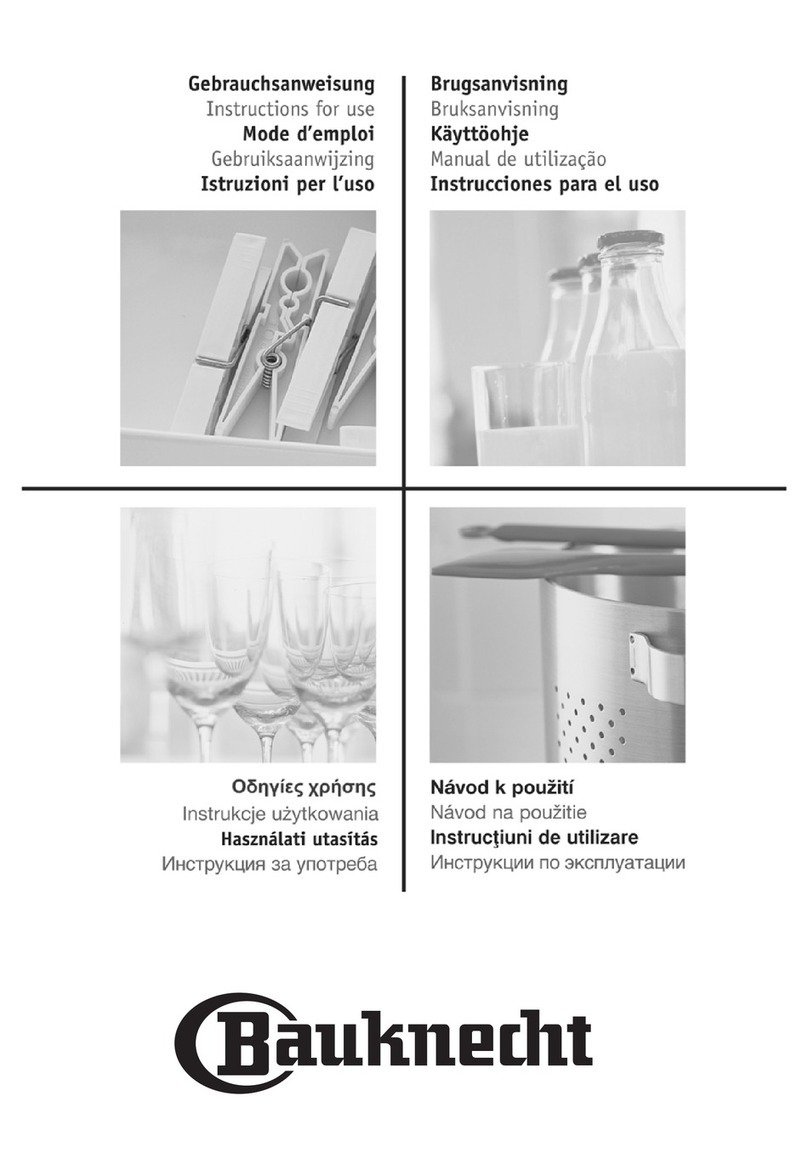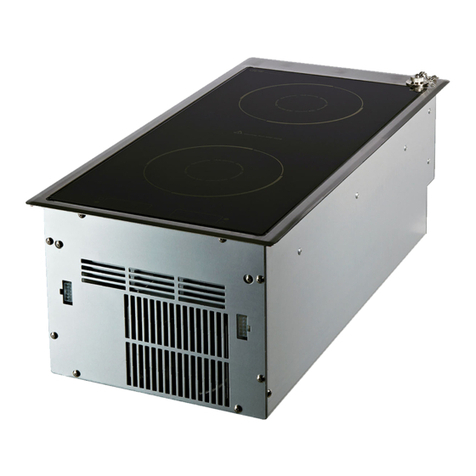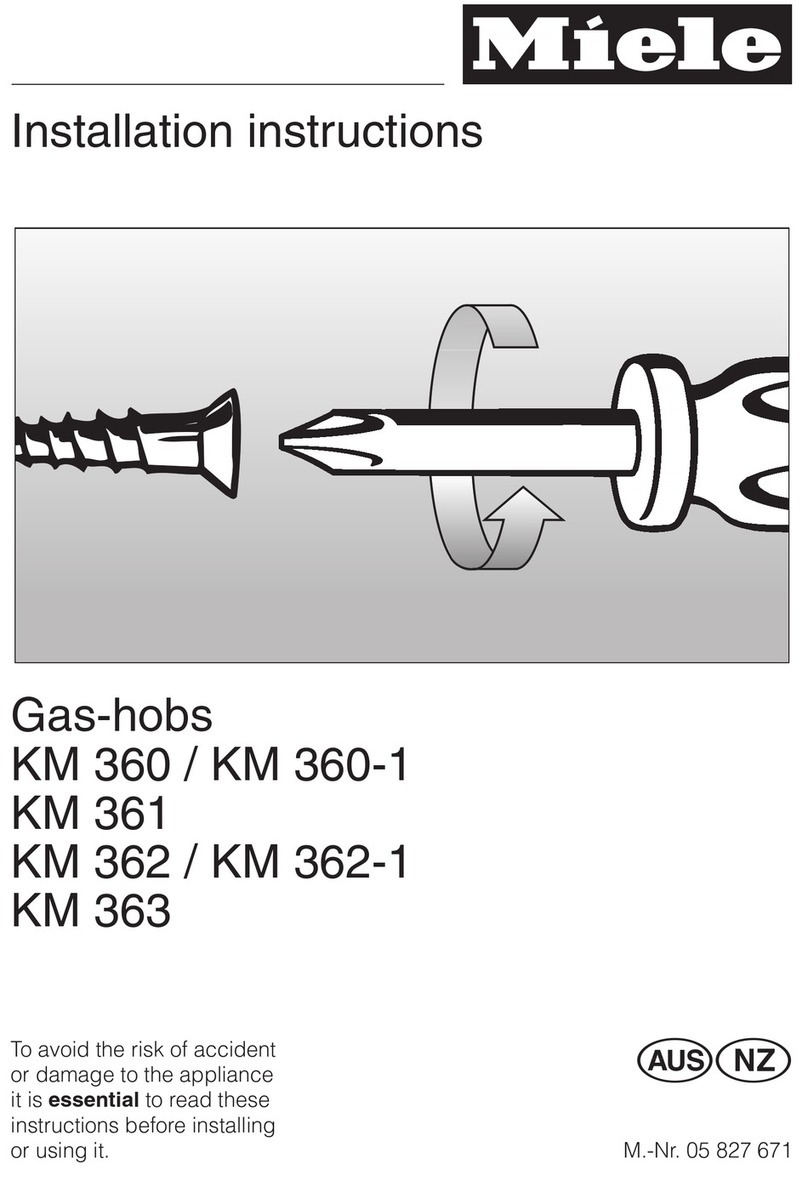Instructions for the installer
10
2Side clearances – (Measurements B & C)
Where B, measured from the periphery of the nearest burner to any
vertical combustible surface, is less than 200 mm, the surface shall
be protected in accordance with Clause 5.12.1.2 to a height Cof not
less than 150 mm above the hob for the full dimension (width or
depth) of the cooking surface area. Where the cooking appliance is
fitted with a ‘splashback’, protection of the rear wall is not required.
3Additional requirements for Freestanding and Elevated Cooking
Appliaces – (Measurements D & E)
Where D, the distance from the periphery of the nearest burner to a
horizontal combustible surface is less than 200 mm, then Eshall be
10 mm or more, or the horizontal surface shall be above the trivet.
See insets above.
NOTES
1Requirement 3 does not apply to a freestanding or elevated
cooking appliance which is designed to prevent flames or the
cooking vessels from extending beyond the periphery of the
appliance.
2The ‘cooking surface area’ is defined as that part of the appliance
where cooking normally takes place and does not include those
parts of the appliance containing control knobs.
3For definition of hob, see Clause 1.4.64.
4For definition of trivet, see Clause 1.4.109.
5Consideration is to be given to window treatments when located
near cooking appliances. See Clause 5.3.4.
3.2 Room ventilation
Caution – This hob may only be installed and operated in rooms
permanently ventilated in accordance with current regulations. For
proper operation of a gas appliance it is essential for the air necessary
for combustion of the gas to be able to flow naturally into the room. Air
must flow directly into the room through openings in its outside walls.
This (these) opening (s) must have a free passage cross-section of at
2
least 100 cm , or 200 cm2for appliances not equipped with gas safety
device. These openings must be constructed so that they cannot be
obstructed indoors or outdoors, and should preferably be close to the
floor on the side opposite to the combustion gas discharge point. If it is
not possible to make the openings in the room where the cooker is
installed, the necessary air may be taken from an adjoining room,
proveded it is not a bedroom or a room with fire risk.
